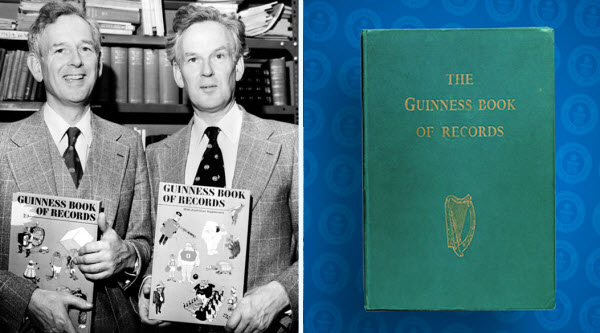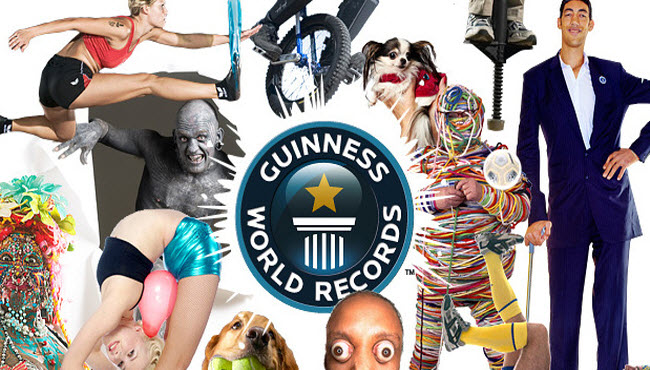Guinness World Records is an annual reference book that catalogs global achievements in various categories, ranging from human accomplishments to natural phenomena. Established in the mid-1950s by Sir Hugh Beaver in collaboration with Norris and Ross McWhirter, its first edition quickly became a best-seller in the UK in 1955. The following year, it expanded internationally, gaining immense popularity. Today, Guinness World Records is available in over 100 countries, translated into 37 languages, and contains more than 53,000 records in its database. The brand has evolved beyond the book format to include television shows, museums, and other forms of media, solidifying its position as the leading authority in documenting world records.
The History of Guinness World Records
The story of Guinness World Records began on November 10, 1951, when Sir Hugh Beaver, managing director of the Guinness Brewery, attended a bird-hunting event along the Slaney River in Wexford County, Ireland. After missing a shot, he entered a debate about which bird was the fastest in Europe. Realizing that no reference book could confirm such facts, he recognized a broader need for a resource that could settle such disputes. This sparked the idea of creating a book dedicated to record-breaking feats.

Beaver’s vision came to life when Christopher Chataway, a Guinness employee, contacted his university friends Norris and Ross McWhirter, who ran a fact-finding agency in London. They were commissioned to compile the first edition of what would become Guinness World Records. By August 1954, 1,000 copies were printed and distributed.
The first official edition of the book, consisting of 198 pages, was published in August 1955 and topped the UK best-seller list. It was introduced to the United States the following year, where 70,000 copies were sold. Due to its overwhelming success, the book adopted an annual revision cycle, typically published between September and October. The McWhirter brothers continued updating the book for many years until Norris McWhirter was assassinated by the Irish Republican Army. Ross McWhirter took over as the sole editor until his retirement in 1995. Over time, the book has sold more than 100 million copies in over 100 countries and 37 languages. The Guinness World Records headquarters remains in London.
Focus on Modern Achievements
In recent editions, the focus has shifted toward human achievements, covering everything from Olympic weightlifting to more unconventional feats like the longest egg toss or the number of hot dogs consumed in three minutes. The book also includes unusual facts such as the heaviest tumor, the most toxic fungus, the longest-running TV series, and the most expensive life insurance policy. Additionally, it features individuals who have set remarkable personal records, such as the youngest person to visit every country in the world.
As Guinness World Records evolved, it shifted from text-heavy to more visually appealing, illustrated editions. In 2005, November 9 was designated as Guinness World Records Day, encouraging people to attempt to break records globally. The complete list of records is now available on the official website. In 2009, Ashrita Furman from New York set a record for the most Guinness World Records titles, with 220 to his name.

The Expansion of the Guinness World Records Brand
In 1976, a Guinness World Records museum opened in the Empire State Building, featuring life-sized statues of record holders like Robert Wadlow, the world’s tallest man, alongside exhibits such as the largest earthworm and an X-ray image of a sword swallower. Although the museum closed in 1995, Guinness World Records has since franchised small museums in tourist hotspots like Tokyo, Copenhagen, London, San Francisco, Orlando, and Las Vegas.
Despite its popularity, Guinness World Records saw book sales decline in the early 21st century as internet usage grew. To compensate, Guinness began offering paid services to those seeking to break records. While anyone can theoretically submit a record attempt for free, the process can be slow. For faster processing, individuals and companies pay fees ranging from $12,000 to $500,000. This has led to businesses and celebrities hiring Guinness to create new categories or find records they can break as a form of publicity.
Guidelines for Setting Records
Guinness World Records serves as the authoritative body for many records, providing adjudicators to verify attempts. The list of records is dynamic, with some added or removed for various reasons. Anyone can apply to have their name included in the book by achieving a notable feat or breaking an existing record.
Guinness World Records maintains ethical guidelines, rejecting certain activities like harming animals. For instance, the “Heaviest Fish” category was removed after fish owners began overfeeding their pets to dangerous levels. Similarly, records involving alcohol consumption, sword swallowing, and public road races have been discontinued due to safety concerns. However, exceptions are sometimes made, such as when Johnny Strange broke a sword-swallowing record despite the category’s closure.
As of 2011, food-related records require that all items be edible and distributed to prevent waste. Guinness also no longer accepts records involving large collections of coins or other items at the request of the U.S. Mint. Environmental harm, like releasing sky lanterns, is discouraged, as are records related to smoking, drug use, or beauty standards, which are deemed subjective and unmeasurable.
